59 F. average high on October 11.
83 F. high on October 11, 2015.
October 12, 1969: Snow accumulates in several locations. Minneapolis receives 2 inches, while St. Cloud records 3.6 inches, Redwood Falls gets 1.7 inches, and Springfield records 1.5 inches.
October 12, 1918: Dry fall weather sets the stage for dangerous fires. Several fires roar through large areas of Carlton and St. Louis Counties. The towns of Cloquet, Moose Lake and Brookston are the hardest hit. The Carlton County Vidette calls it a 'Hurricane of burning leaves and smoke'. At least 453 fatalities are reported, and possibly as many as 1,000 occurred. Over 11,000 people would be left homeless.
Loading The Dice In Favor of Stronger Hurricanes?
If you have friends or family living on Florida's east coast chances are they're counting their blessings. Had Matthew's track been 30 miles farther west damage and loss of life could have been catastrophic.
The Atlantic is 1-2F warmer than a century ago. Hurricanes get their strength from warm ocean water, and Matthew went from a tropical storm to a Category 5 in 36 hours. I've never seen that before in the Atlantic basin. Weather models are pretty good now - but they'll never be perfect. Officials have to err on the side of safety.
But where do you safely move evacuees? 12-18 inches of rain fell across North Carolina, 100-200 miles inland from the coast. With hurricanes there are no easy answers.
After a couple of lukewarm days today will be an atmospheric reality check; a cool, clammy slap across the face as northwest winds chase puddles into Wisconsin.
Kiss your begonias goodbye, because most suburbs will wake up to a frost Thursday morning. We just can't shake this soggy pattern. Models pull in more showers from Saturday into much of next week.
Will this translate into more snow this winter? A guy can dream.
* October 7 file image of Hurricane Matthew: NOAA and AerisWeather AMP.
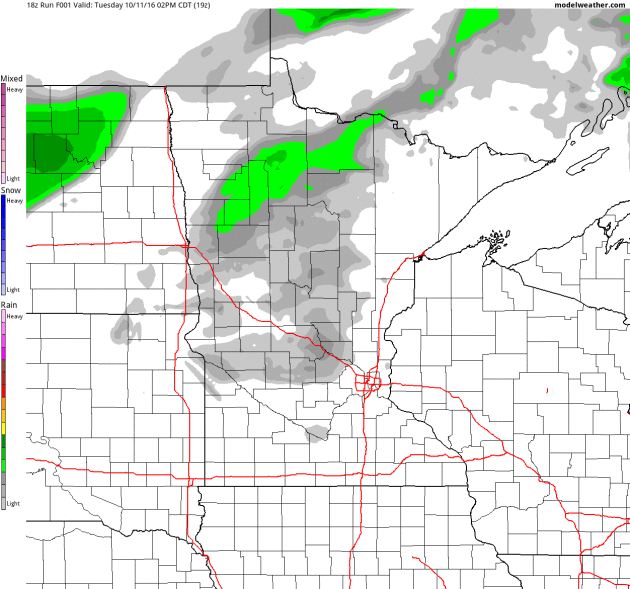
Photo credit: "A man holds onto a yield sign after trying to swim out to help a truck driver who was stranded in floodwater from Hurricane Matthew in Hope Mills, N.C., Oct. 9, 2016."
Twitter photo credit: Lorie Moore.
18.38" rain from Matthew at Elizabethtown, North Carolina. NOAA has a long list of rainfall amounts here.
Hurricane Matthew: Trail of Devastation; 28 Dead Across 5 Southern States. Here's an update via ABC News.
Hurricane Matthew Challenged Latest Prediction Tech. Yes, GOES-R should help. Here's an excerpt from The Orlando Sentinel: "The technology behind predicting tropical storms and hurricanes faced a tough test last week — and that, ironically, could delay a Space Coast company's attempts to improve forecasting. Because of operational delays at Cape Canaveral after Hurricane Matthew, the GOES-R satellite might not launch Nov. 4 as scheduled. A spokeswoman for United Launch Alliance, which will launch the satellite, said the launch "may be delayed a few days." The satellite and its ground systems were sold to the National Oceanic and Atmospheric Administration by Melbourne-based Harris Corp. and Lockheed Martin, which has a significant presence in Central Florida..." (Rendering: Lockheed Martin).
Record Number of USGS Sensors Deployed for Hurricane Matthew. Details via USGS.
How Did Hurricane Matthew Become So Threatening So Quickly? NOVA Next has more perspective: "...Warm water fuels hurricanes, and over the past week, water temperatures have been about 85° F in the Caribbean where Matthew first intensified. While that is a little above normal, the water off the Atlantic coast is even warmer when compared to the seasonal normal. Average ocean temperatures have risen over the last century, with parts of the Atlantic now 1-2°F warmer than a century ago. While warm water isn’t the only factor that determines how strong a hurricane can get, it is a key ingredient. There is the expectation that hurricanes and typhoons across the globe will last longer and produce more rain by the end of the century, according to the research compiled in the 2013 IPCC Fifth Assessment Report..."
Image credit: "This visible image from NOAA's GOES-East satellite shows the location of Hurricane Matthew on October 7 at 2:30 pm EDT."
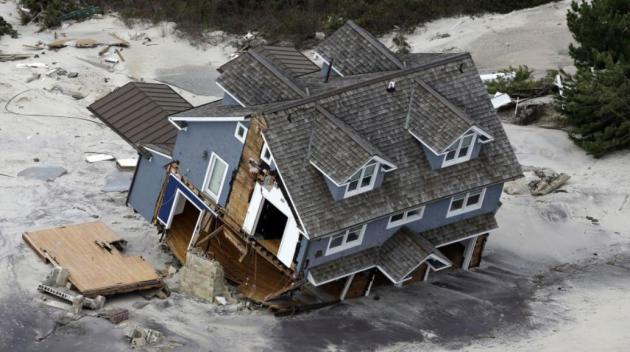
New York Is Going To Get A Lot More Hurricanes Like Sandy. The incidence of major flooding in New York has tripled since 1800 - the trends are troubling. Here's a clip from a story at Pacific Standard: "...When Hurricane Sandy
reached the Mid-Atlantic four years ago, it brought with it some of the
most severe flooding the region has ever seen. It also took a financial
toll, with damages totaling more than $71 billion—second only to
Hurricane Katrina among damage in the United States. And here comes more
bad news: Researchers report
that New York City is likely to get hit by many more floods on par with
Sandy in the future. “[T]he frequency of Hurricane Sandy-like extreme
flood events has increased significantly over the past two centuries and
is very likely to increase more sharply over the 21st century, due to
the compound effects of sea level rise and storm climatology change,” Ning Lin, an assistant professor of civil and environmental engineering at Princeton University, and her colleagues write today in Proceedings of the National Academy of Sciences..." (File image: Mike Groll, AP).
Bloomberg has more perspective on the back and forth between Musk and Murray.
In Minnesota, Coal Still Has Its Defenders - Funded by North Dakota. Here's the intro to a story at Midwest Energy News: "While Minnesota utilities continue to turn away from coal, the industry still has its champions in the state – with one group funded largely by North Dakota taxpayers and coal companies. The Coalition For A Secure Energy Future, an offshoot of the Lignite Energy Council, has met with legislators and candidates around Minnesota to discuss why energy policies must feature coal as a future component of generation. The coalition has a three year, $3.6 million budget, which the blog Bluestem Prairie first disclosed earlier this year..." (File photo: Darla Hueske).
Photo credit: "
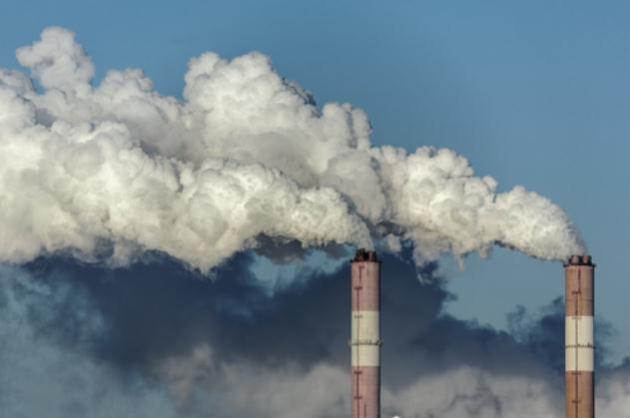
The Next Zika. 4 more potential reasons not to get out of bed today. Here's an excerpt from Scientific American: "Disease detectives are on the lookout for obscure viruses that can be spread among people by traveling insects, and quickly become a widespread problem. Scientific papers are filled with illnesses to watch. Four particular viruses now stand out to virologists and epidemiologists, although it is not certain any of the ailments will become the next Zika or West Nile virus. But researchers give several reasons to keep a close eye on this quartet..." (Image credit: Climate Nexus).
24th Annual Kuehnast Lecture at University of Minnesota on Wednesday.
I'm looking forward to introducing one of my heroes, Rep. Bob Inglis
from South Carolina, who is leading the effort to find a conservative
solution to climate change. Here's an excerpt from Dr. Mark Seeley at WeatherTalk: "...The 24th Annual Kuehnast Endowment Lecture
will take place on Wednesday, October 12th at 2pm in the University of
Minnesota St Paul Campus Student Center Theater. Our topic this year is
“Climate Change and the American Free Enterprise System.” Our speakers
are Paul Douglas, former Twin Cities broadcast meteorologist and
President of Aeris Weather; and Bob Inglis, former South Carolina
Republican Congressman and founder of RepublicEn.org, which is centered
on conservative principles and a free-enterprise solution to climate
change. This program is free and open to the public."
* More details on the Kuehnast Lecture Series and how you can participate here.
Photo credit: "Civil War-era cannonballs were discovered on a South Carolina shore on Sunday." (AP)
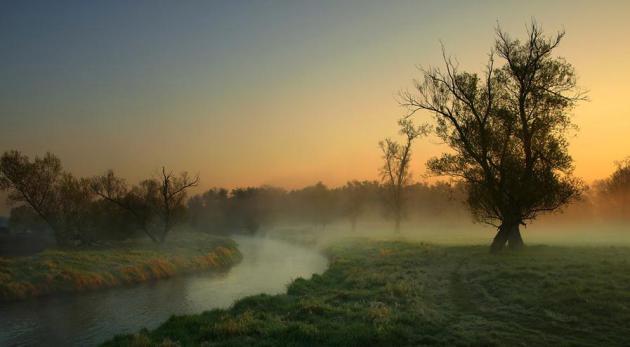
TODAY: Showers taper; mostly cloudy and raw. Winds: NW 10-15. High: 49
WEDNESDAY NIGHT: Partly cloudy and frosty late. Low: 31
THURSDAY: Waking up to frost. Cool blue sky. Winds: SW 8-13. High: 56
FRIDAY: Partly sunny, breezy and milder. Winds: S 10-20. Wake-up: 42. High: 67
SATURDAY: Passing shower or T-shower. Winds: NW 8-13. Wake-up: 57. High: 68
SUNDAY: Dry start, few showers by afternoon. Winds: SE 8-13. Wake-up: 49. High: 65
MONDAY: Showers taper, peeks of sun? Winds: NE 5-10. Wake-up: 52. High: 63
TUESDAY: What else? More showers. Winds: W 10-15. Wake-up: 48. High: 59
Climate Stories....
Did Climate Change Turbocharge Hurricane Matthew? You could certainly make the case, especially for Haiti and Cuba. here's an excerpt from Climate Signals: "...Unusually warm seas also fueled Matthew's rapid intensification and sustained the hurricane which broke the record for maintaining Cat 4/5 strength in October. Matthew first spun up into a hurricane on September 29, surging from a tropical storm into a Category 5 hurricane in just 36 hours, a stunning development consistent with the observed trend toward rapidly intensifying tropical cyclones..." (October 5 file image: NOAA and AerisWeather).
Climate Studies: New York City Flood Risk Will Triple, Western Wildfires Have Doubled. Here's the intro to a summary at Christian Science Monitor: "Expect more natural disasters as climate change goes unchecked, say scientists. Already wildfires across the Western United States have doubled during the past three decades as a result of human-induced climate change, according to a study published Monday in the journal Proceedings of the National Academy of Sciences. And that study coincides with another published in the same journal predicting more dramatic flooding with rising global temperatures..."
Photo credit: "In July and August, the Roaring Lion fire devoured more than 8,000 acres of forest, along with over 60 homes and outbuildings in eastern Montana's Bitterroot Range. Here, the fire burns through dense conifers, July 31, 2016." Courtesy of Mike Daniels/Columbia University

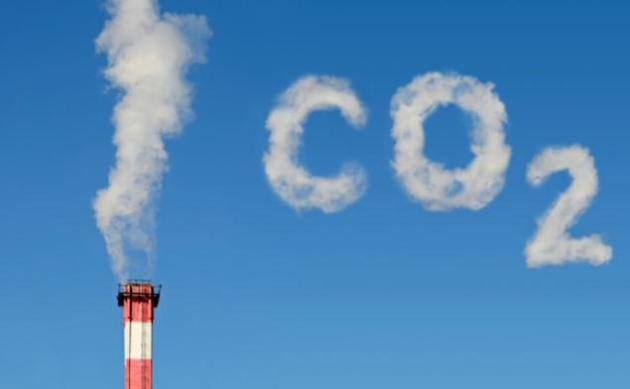
"Caring for Creation" Makes The Christian Case for Climate Action. Here's an excerpt of a review at The Guardian: "...Recently a book has been published by a faith-science duo. That duo is Paul Douglas, respected meteorologist, entrepreneur, Republican, and Christian, and his writing partner Mitch Hescox who leads the Evangelical Environmental Network (the largest evangelical group devoted to creation care). Their book, entitled Caring for Creation, provides a masterful balance of science, faith, and personal journey. The style of the book is one I have not seen before. It is a side-by-side presentation of first science, then faith, then science, and back to faith. Interspersed within the main text are enlightening anecdotes mainly from weather forecasters across the country which show an informed lived experience of experts watching the climate change before their very eyes. Importantly the authors provide a list of concrete things that we all can do, starting right now to make a meaningful impact in reducing global warming..."
Climate Change Blamed for Half of Increased Forest Fire Danger. The New York Times reports: "Forest fires are burning longer and stronger across the western United States,
lighting up the landscape with alarming frequency. Residents are forced
to flee, homes are incinerated, wildlife habitats are destroyed, lives
are lost. Last year, the Forest Service spent more than half its annual budget fighting fires. Scientists have long theorized that climate change
has contributed to the longer fire seasons, the growing number and
destructiveness of fires and the increasing area of land consumed,
though some experts suggest that the current fire phenomenon is not just
a result of a changing climate, but also fire suppressing policies
practiced by the government for the last century or more..."
Photo credit: "The Loma Fire rages on the Santa Cruz Mountains summit beyond the Giant Dipper Roller Coaster in Santa Cruz." Credit Shmuel Thaler/The Santa Cruz Sentinel, via Associated Press.

Katharine Hayhoe, a Climate Explainer Who Stays Above the Storm. Here's an excerpt from The New York Times: "...Katharine Hayhoe is a national treasure,” said Anthony Leiserowitz, the director of the Yale Program on Climate Change Communication.
He said that she combined powerful communications skills, world-class
scientific credentials and an ability to relate to conservative
religious communities that can be skeptical about the risks of a
changing climate. Gavin Schmidt,
a NASA climate scientist, said in an email that Dr. Hayhoe’s faith is
an important factor, because “people can accept unwelcome truths much
more readily if they come from within, rather than from outside, their
community/family/group...”
No comments:
Post a Comment